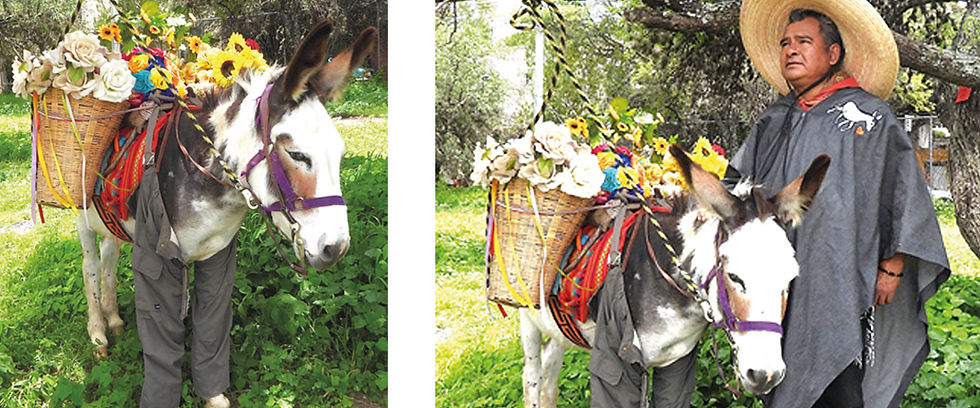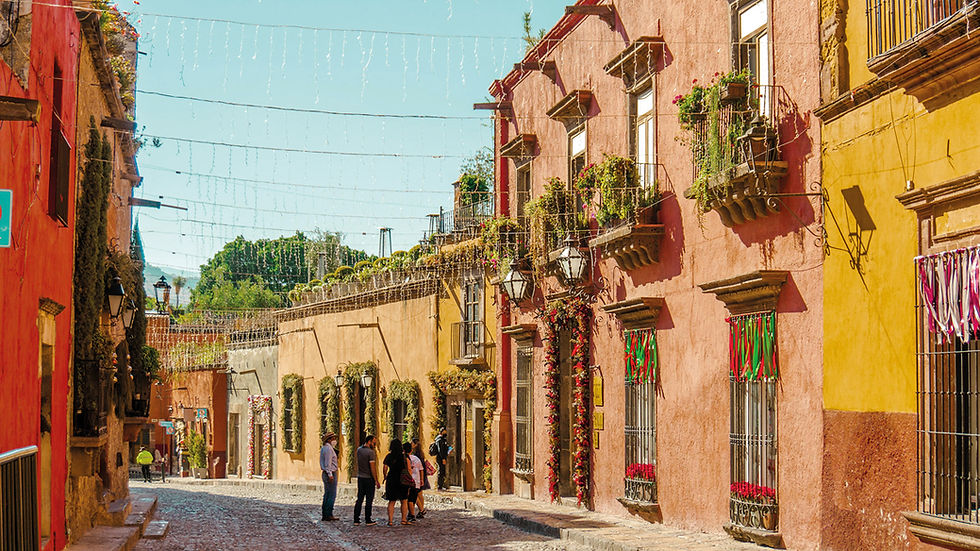Fine Catrina Dressing: Learning more about this Mexican folklore figure
- camieinmx
- 30 oct 2024
- 3 Min. de lectura
Actualizado: 29 may

By Isabel Castrejón
Day of the dead has become a very beloved tradition for Mexicans and foreigners. Celebrated on November 1st and 2nd each year, this holiday involves family and friends gathering to pay respects and remember close ones who have died. Traditions that are linked with Day of the Dead include building ofrendas with everything that the departed loved, cempasúchil flowers and sugar calaveras.
The Catrina figure is probably one of the most well known characters of Mexican folklore. Hundreds of people, many that have never done makeup before, venture into the Catrina makeup realm and dress up to the nines to parade around town. The parade aspect is actually very suited to the Catrina story. In the midst of everything that’s happening during those celebration days, I think it’s important to remember where all of this came from and why the Catrina has been adopted for this holiday.
There are many drawings of skulls that accompany texts that were written with the goal of criticizing the upper class and how out of tune they were with what was happening during the Mexican Revolution. These skull figures dressed in formal clothing, drank pulque, rode horses and went to fancy galas - in contrast with the misery and turmoil that the majority of the country was experiencing. The Catrina that we know and remember stands out amongst all of the others. The original name is Calavera Garbancera and it was created by artist José Guadalupe Posada in 1912. «Garbancera» is the word that was used at that time to refer to people who sold chickpeas and who, having indigenous blood, claimed to be European, whether Spanish or French and who denied their own race, heritage and culture. This is made more noticeable by the fact that the skull has no clothes, only a hat; in Posadas’ view, this is a criticism of many Mexicans in the village who are poor, but still want to pretend to have a European lifestyle that does not suit them.Many years later, as a big Posada admirer, Diego Rivera adopted the character of the Catrina for one of his murals and made it his own. He was the one who gave it the Porfirian attire and a feathered stole representing Quetzalcoatl, by capturing it in his mural 'Dream of a Sunday Afternoon in the Alameda Central', where the skull appears with its creator, Posada and a young version of Rivera with Frida Kahlo.
Today, the Catrina has become a popular artifact and has gone beyond the limits of canvas or engraving to become part of the living Mexican culture, its uses and customs. It is part of “the Mexican” and its position in relation to death. The image of the Catrina is becoming the quintessential Mexican image of death.
Now you know that it is actually part of the Catrina story to put on your fanciest outfit and go parade around town. To achieve this look I encourage you to turn to local designers, they know what this Holiday means and what will make you stand out. Using traditional fabrics with new cuts and styles, Jade Diseño Mexicano will be a perfect fit for a Catrín or Catrina. You can also go to young and creative designers such as Raúl del Castillo or Sebastián Clares for new interpretations and elegant ideas. If you’re looking for special jewelry you need to check out Barbosa Jewelry, they have a wide variety of pieces from rings to crowns, their designs will add the final touches to your outfit.
Go into the small boutiques, talk to the designers, they’re in tune with the Day of the Dead celebrations and will never let you down. When you join the Catrina Parade during the Day of the Dead celebrations you’re representing all of this history and tradition.
Contact Isabel Castrejón on Instagram @wear.sanmiguel, where you can also get information about the Fashion Parade, taking place in November 7th









Comentarios